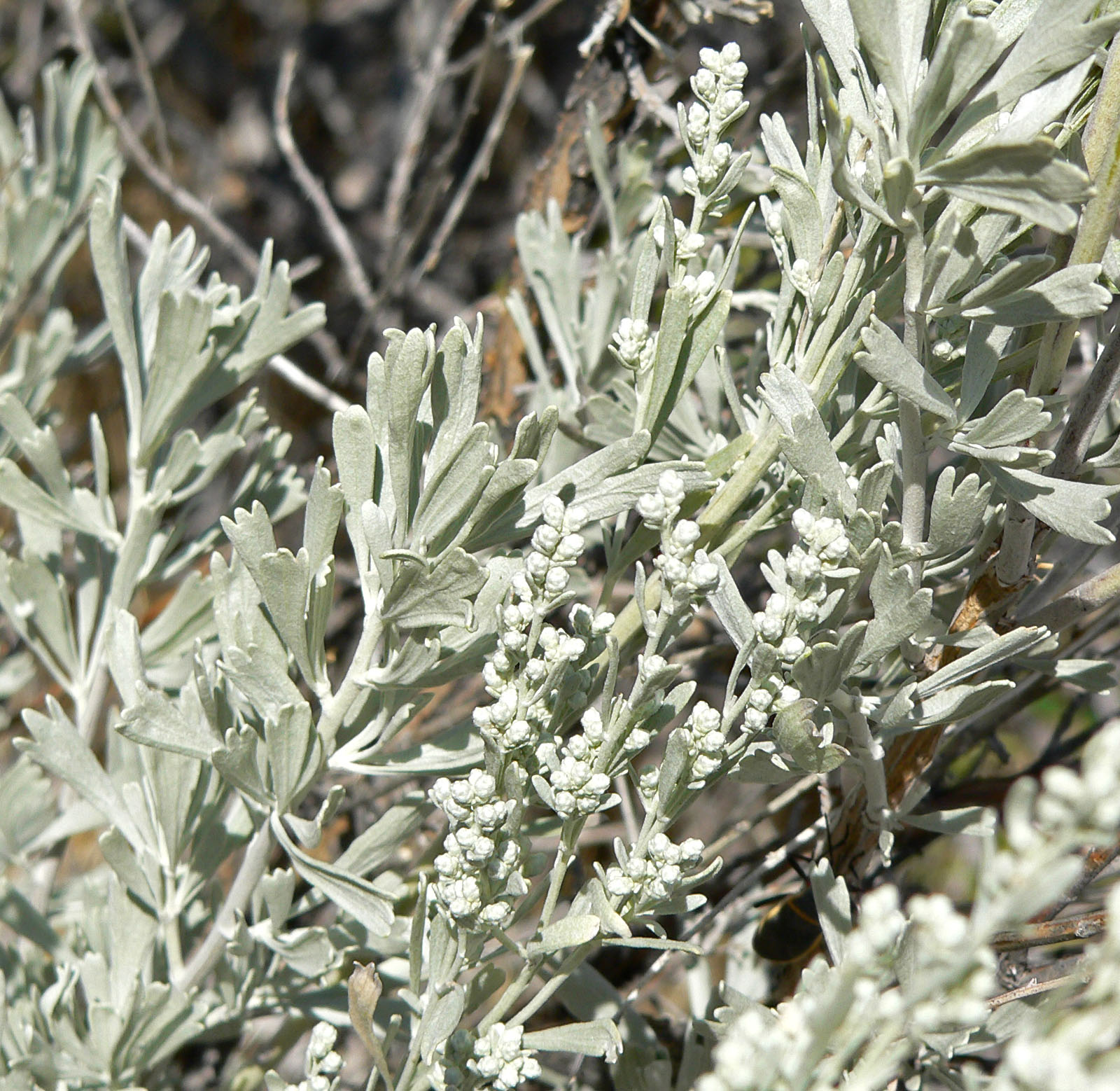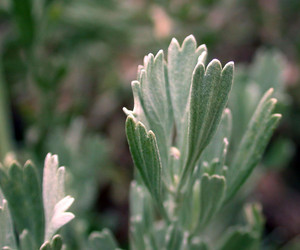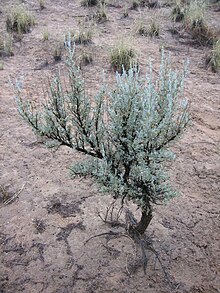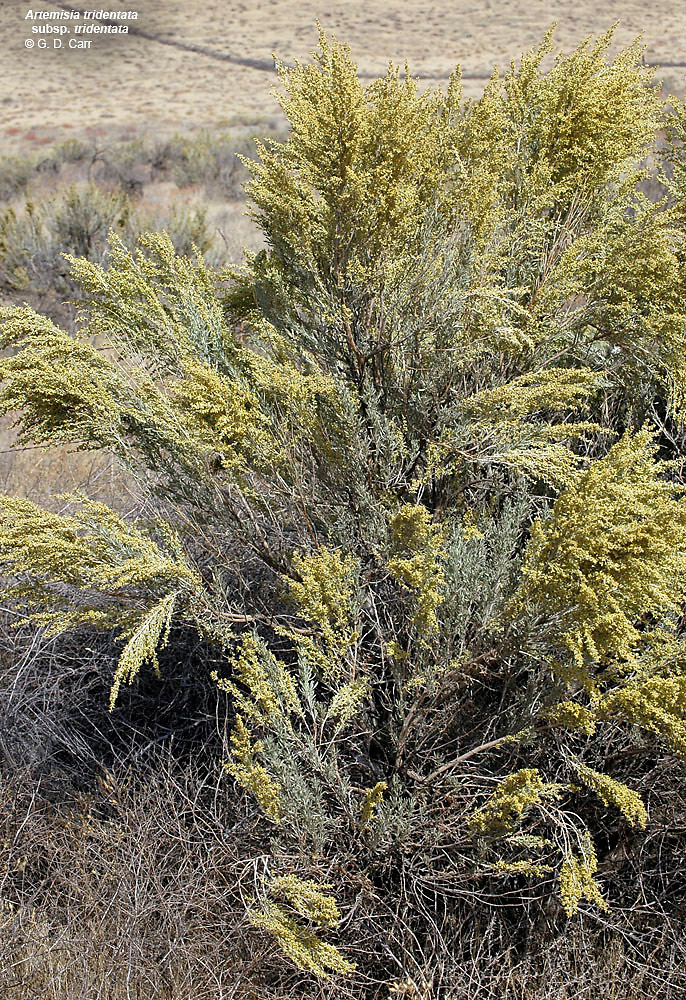Artemisia tridentata
Sagebrush in their natural habitat.
Sagebrush (Artemisia tridentata ) (English common name: Sagebrush ), also steppe sagebrush or desert sage called a flowering plant in the sunflower family is (Asteraceae).
The English name of sagebrush, Sagebrush, is also used for some related species of the genus Artemisia, for example, the California sagebrush.
Occurrence
This hardy plant grows in dry areas of the western United States, especially in vast, desert -like areas of the Great Basin. A small population exists in Middlesex County in the U.S. state of Massachusetts on the East Coast of the USA. Furthermore, it is widespread in the Canadian province of British Columbia and northwestern Mexico. The Sagebrush grows both on sandy and loamy soil.
Description and ecology
The Sagebrush is a silvery - gray rounded shrub or small tree that reaches an average plant height of about 1.20 meters. Along rivers or in other relatively moist areas it can reach up to 3 meters Height.
Similar to the sage, he spreads a aromatic odor, especially when it is wet. He is the sage, however, not related. Unlike him, it tastes bitter. Probably is this smell to deter animals.
The leaves of the desert wormwood are wedge-shaped and attached to the thin end of the branches. The other, wider end is usually in three - divided wings - sometimes two or four. The leaves are covered with fine silvery hairs that keep the leaves cool and minimize water loss. Most leaves fall neither in autumn nor in the winter, since they tend to grow in areas where winter precipitation are larger than in summer.
The flowers of the sagebrush fall down at least until the end of the summer. The bloom conditions contain only three to eight flowers. The flowers are yellow. The pappus is 1 to 2 millimeters long.
In contrast to most other plant species of its habitat the roots of sagebrush are not fire-resistant. After a fire, it can only grow again when the wind is blowing seeds in the burned area. The downy brome is strongly penetrated into the habitat of sagebrush. You can possibly cause a fire cycle that recurs too often, as the Sagebrush finds time to resettle.
System
Artemisia tridentata 1841 was first described by Thomas Nuttall in Transactions of the American Philosophical Society, Series 2, Volume 7, page 398. Few botanists rank him as Seriphidium tridentatum ( Nutt. ) to WAWeber a separate genus Seriphidium. Other synonyms are Artemisia and Artemisia parishii A.Gray vaseyana Rydb ..
Benefits and importance
While the Sagebrush contains for livestock feeding valuable substances such as proteins, but also oils, such as the Artemiseol, which are toxic to the symbiotic bacteria in the rumen of many ruminants. Find the cattle in winter no other food, it eats sagebrush leaves. The poison of the leaves kills the bacteria needed for digestion in the rumen of cattle, so the digestive process is disrupted. However, since this ensures essential for the necessary heat, freezes the cattle. Sheep tolerated to a limited extent sagebrush leaves, especially young seedlings in the spring. Pronghorn were the only large herbivores that eat the sagebrush extensively. Sagebrush chicken feed from 70 to 75% of flowers and leaves of the sagebrush. For the North American Dwarf Sagebrush is the main food.
For many North American Indians of the Sagebrush is one of the most sacred plants. They burn him in ceremonies in the belief that this would keep away evil spirits and purify the mind. Some tribes, such as the Northern Shoshone, used it also for the construction of huts.
The Sagebrush is the national flower of the U.S. state of Nevada.










